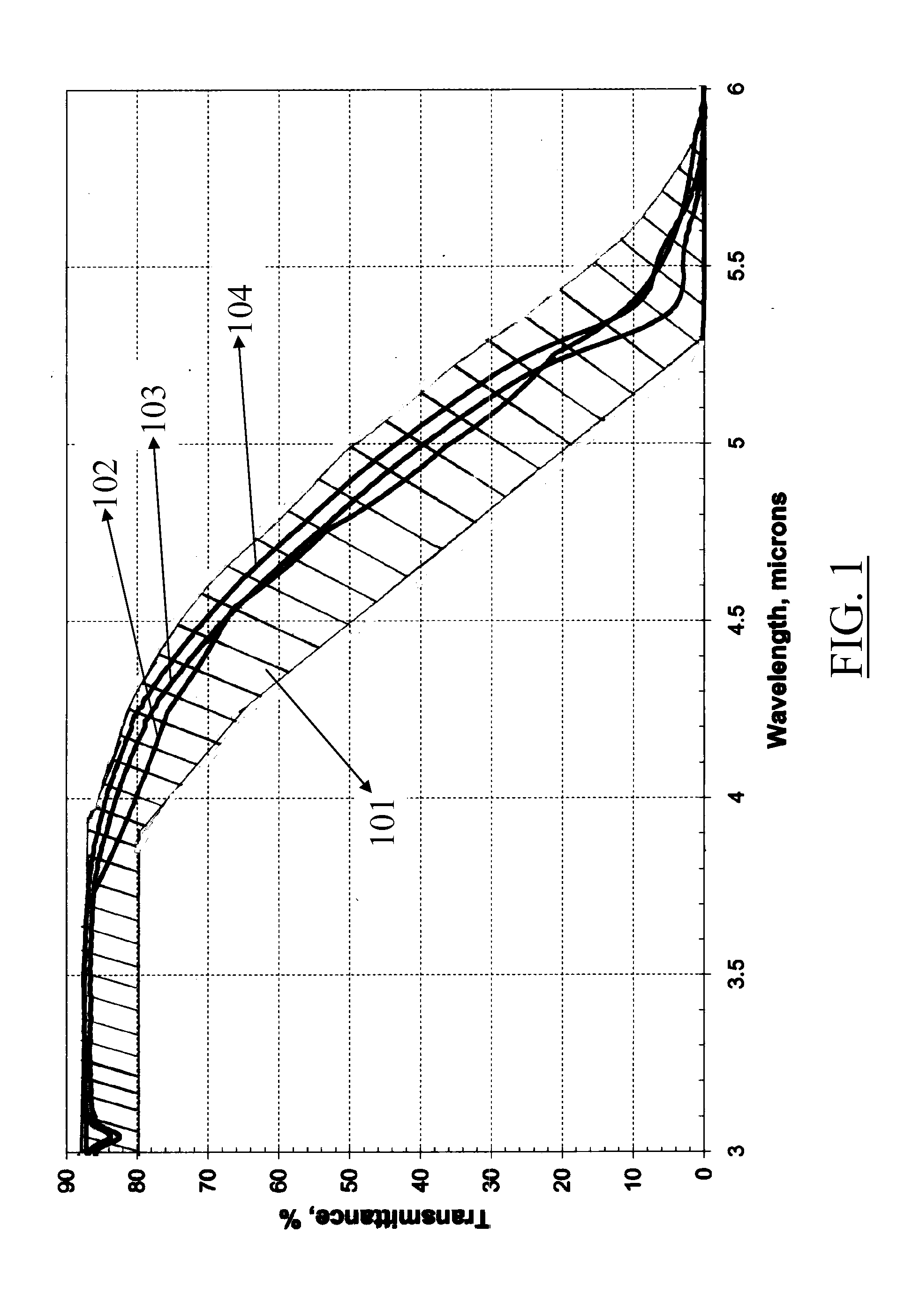Transparent Polycrystalline Ceramic Material
a technology of polycrystalline ceramics and polycrystalline crystals, applied in the field of transparent polycrystalline ceramic materials, can solve the problems of inconvenient manufacturing, difficult and expensive growth of monocrystalline sapphire, and inability to meet the needs of the market, and achieve the effects of convenient manufacturing, high transparency, and durabl
- Summary
- Abstract
- Description
- Claims
- Application Information
AI Technical Summary
Benefits of technology
Problems solved by technology
Method used
Image
Examples
example 1
Tile or Disc Via Pressing
[0028]In this example, 5 to 35 weight percent of the powder mixture is aluminum oxynitride and the remainder is aluminum oxide or hydroxide and magnesium oxide or hydroxide in a 1:2 magnesium to aluminum cation ratio. The mixture is weighed and wet milled in a ball mill with a grinding media, such as water or a non-aqueous medium such as alcohol, and a dispersant for homogeneous mixing and milling. An organic binder is added to the slurry, and the slurry is then spray dried to form a powder. The spray dried powder is poured into a mold of a desired shape (e.g., a rectangular, square or circular shaped tile or disc) and pressed isostatically or uniaxially to pressures of 60 kpsi or higher to obtain a green body of the desired shape. The green body is then subjected to binder burnout followed by sintering and hot isostatic pressing to achieve>99% of theoretical density. The hot isostatically pressed tile or disc is then ground and polished to achieve optical t...
example 2
Tile, Disc, Dome or Lens Via Slip Casting
[0029]The composition described in Example 1 is weighed and wet milled in a ball mill with grinding media, water and dispersant for homogeneity. Organic binder is added to the slurry, and the slurry is screened through fine mesh to remove particulates. The slurry is then cast by pouring into a porous mold of desired shape, such as rectangular or circular or square shaped tile or lens, a hyper-hemispherical or hemispherical dome, or any other useful shape. The porous mold can be made out of plaster of paris / gypsum, alumina, or any polymeric material.
[0030]The cast green body is then dried and subjected to binder burnout followed by sintering and hot isostatic pressing to achieve greater than 99% of theoretical density. The hot isostatic pressed tile or disc is then ground and polished to achieve optical transparency.
PUM
| Property | Measurement | Unit |
|---|---|---|
| thickness | aaaaa | aaaaa |
| thickness | aaaaa | aaaaa |
| thickness | aaaaa | aaaaa |
Abstract
Description
Claims
Application Information
 Login to View More
Login to View More - R&D
- Intellectual Property
- Life Sciences
- Materials
- Tech Scout
- Unparalleled Data Quality
- Higher Quality Content
- 60% Fewer Hallucinations
Browse by: Latest US Patents, China's latest patents, Technical Efficacy Thesaurus, Application Domain, Technology Topic, Popular Technical Reports.
© 2025 PatSnap. All rights reserved.Legal|Privacy policy|Modern Slavery Act Transparency Statement|Sitemap|About US| Contact US: help@patsnap.com

